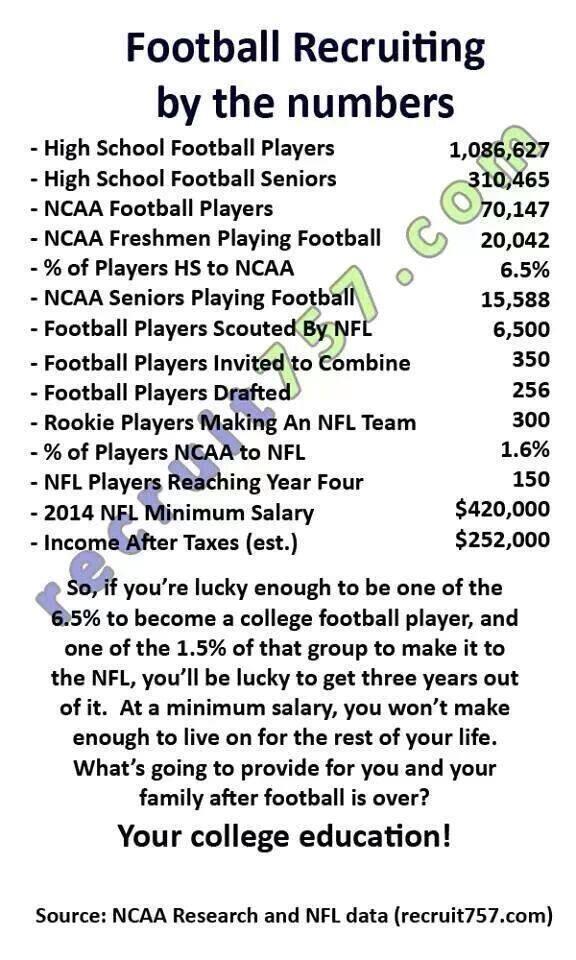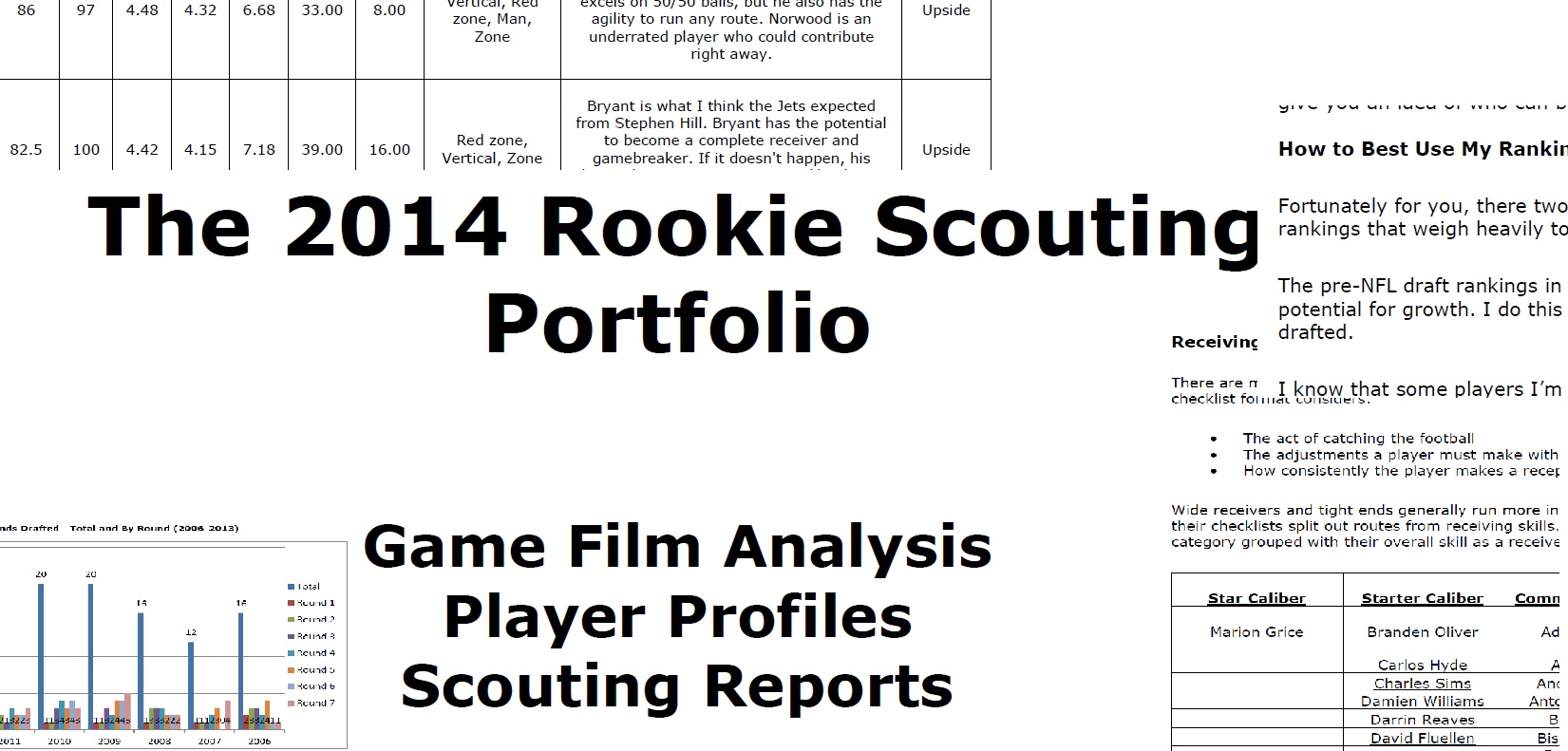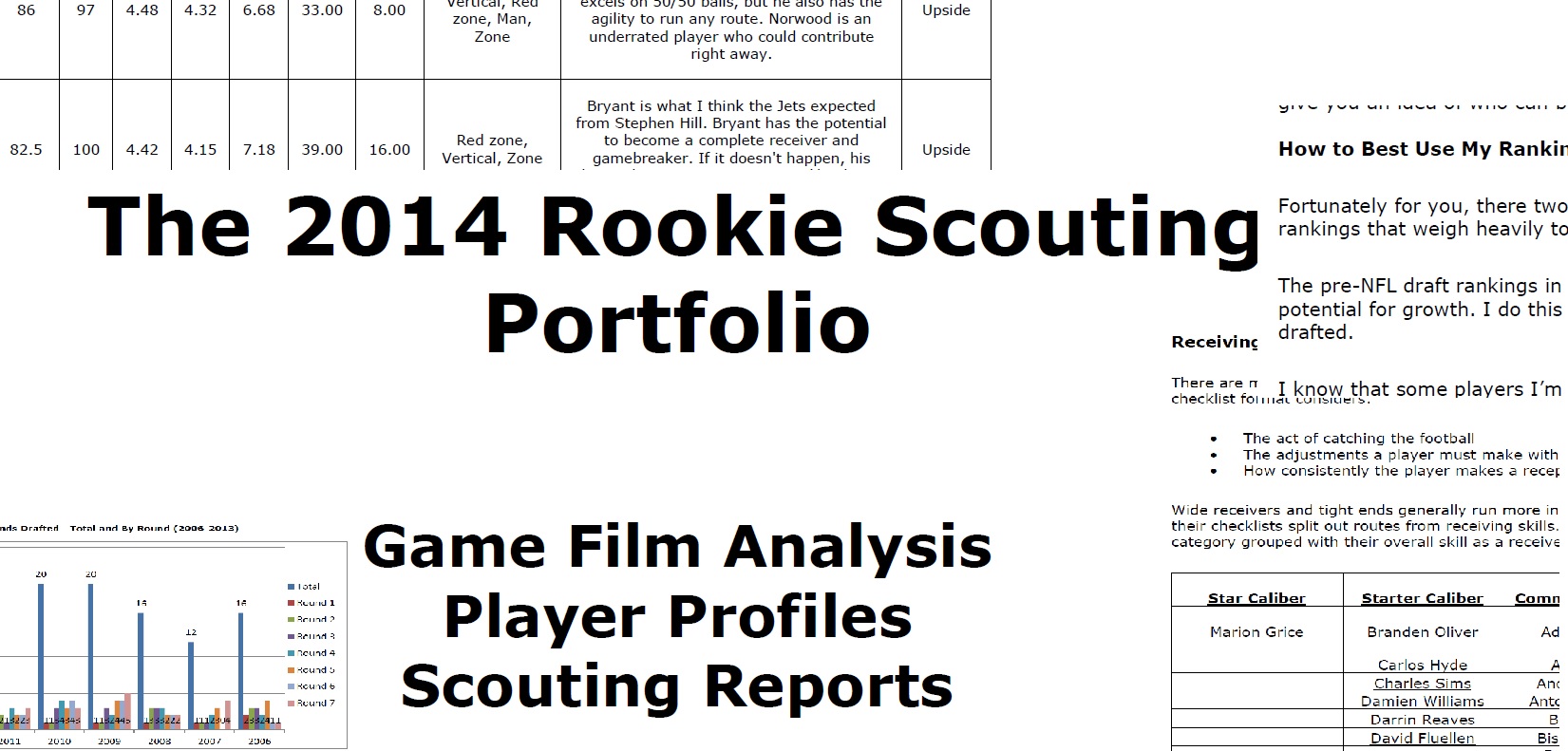
Waiting to buy the RSP for the Post-Draft Analysis? Wait no longer . . .
“I’m not sure it would be a good business decisions, but I [would] probably pay $100 for the Matt Waldman Rookie Scouting Portfolio.”
-Mike Beckley, @NFLLionBlood on Twitter
The 2014 Rookie Scouting Portfolio Post-Draft Add-On is ready for download. If you’re in a dynasty league, the combination of the 2014 RSP and the RSP Post-Draft will have you prepared for this year and beyond. Want details? Need details? I have ’em right here:
- 84 pages
- How to use the RSP and RSP-Post Draft together
- Overrated/Underrated
- Good/Bad post-draft fits
- UDFAs to watch
- Long-term dynasty waiver wire gems
- Strategic overview of 2014 rookie drafts
- Tiered Value Chart Cheat Sheet across all positions
- Post-Draft rankings analysis and commentary–including notes about impending contracts years of competition on the depth charts
- Average Draft Position (ADP) Data of 19 dynasty drafts
- RSP Ranking-to-ADP Value Data
- Raw Data Worksheets to continue calculating additional ADP data for future drafts
Hell, take a video tour of the 2013 post-draft to see what I mean:
[youtube=http://www.youtube.com/watch?v=T8f06wrsHVI&feature=share]
Seriously, this analysis is worth the price of the 2014 RSP package alone, but you get this as a part of your purchase with the 2014 RSP. Remember 10 percent of each sale is donated to Darkness to Light to prevent sexual abuse in communities across the United States. While that alone should get you to download the RSP package, do it because you will be blown away with the detail and insight of the analysis and content. It’s why the RSP has grown so much in the past nine years.






